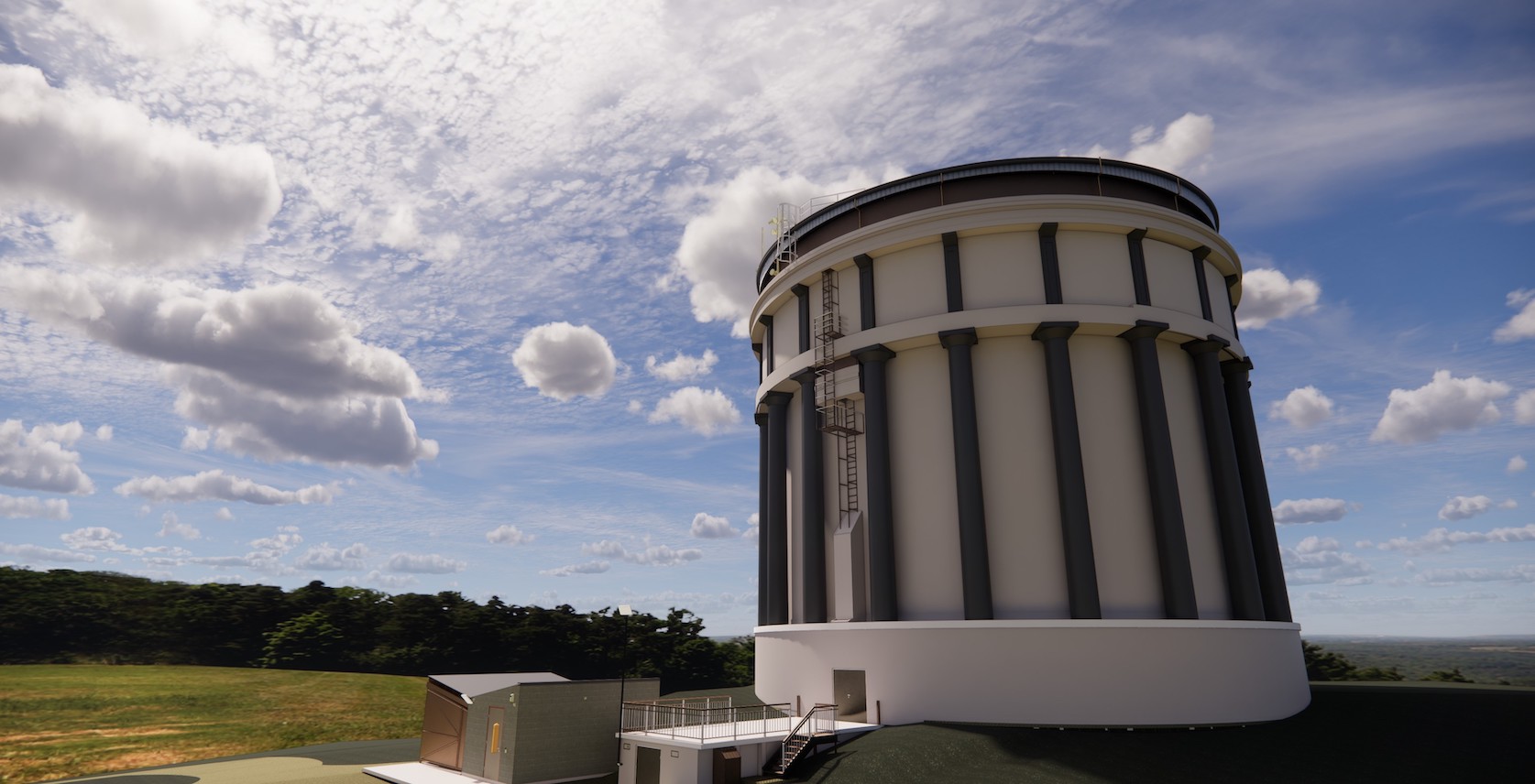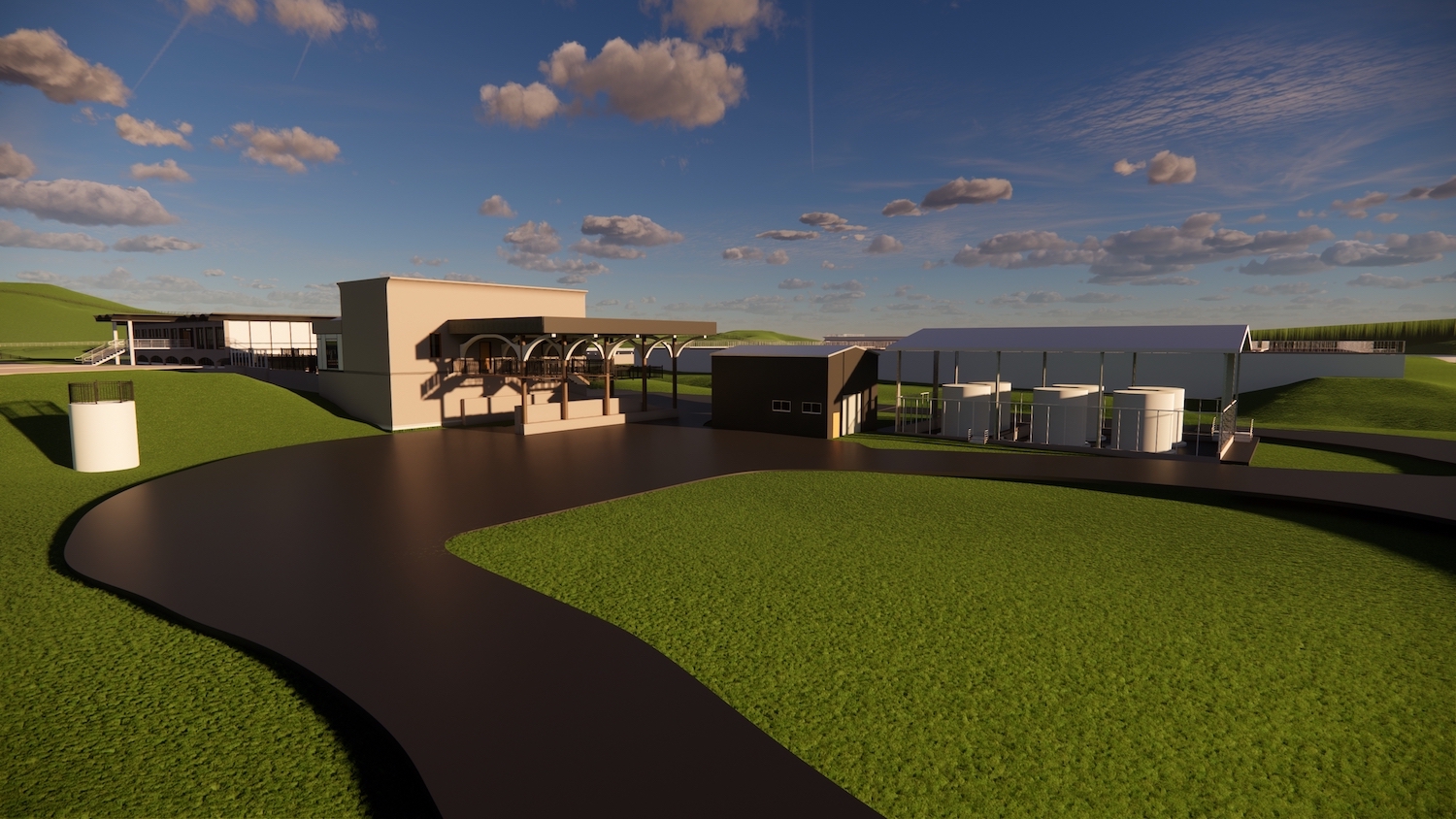
Six years ago, Hamilton City Council on New Zealand’s North Island began a project to apply BIM technologies and processes to the asset management of its water facilities. Two and a half years on from his first piece about the work, Glenn Jowett, technical director, digital engineering advisory, at design and engineering consultancy Beca, brings BIMplus up to date.
In 2016, Hamilton City Council’s City Waters department embarked on the journey to implement BIM as part of its asset information systems. The existing as-built records of City Waters’ assets were assessed as being outdated and in need of improvement. Existing 2D records were accessible, but the accuracy of the information was uncertain. Changes were needed to ensure the as-built information was relevant.
To centralise and validate as-built information about the existing asset base represents a step forward. Modelling the facilities in 3D offers a digital means of validating and understanding spatial data that 2D drawings cannot offer. 2D drawings cannot be leveraged the same way that data-rich 3D models can.
City Waters began a programme to improve its asset record information. It partnered with Beca to develop as-built records that can be maintained and treated as ‘living as-builts’.
The programme started in 2018 and is still active today, with scope to:
- drone map large sites;
- laser scan smaller sites, and within and around all buildings;
- develop a three-dimensional model of each site with components broken down to align with the City Waters asset hierarchy;
- develop a set of as-built drawings for each site;
- visit sites to identify assets and tag the assets in the 3D models;
- reconcile asset data from the City Waters asset database with the 3D models.
Sites digitised to date include the Pukete wastewater treatment plant buildings, the Waiora water treatment plant buildings, the Ruakura reservoir, the Dinsdale reservoir, and the Ruakiwi reservoir.
Asset management excellence

“The main driver for implementing BIM as an asset information system is to enable City Waters to achieve a higher level of asset maturity.”
Organisations need reliable and comprehensive asset information to enable and support all the asset management functions described in the International Infrastructure Management Manual. At Hamilton City Council, the asset information system is a network of tools, processes, and databases. In 2016, City Waters decided to incorporate BIM to their asset information management systems.
The main driver for implementing BIM as an asset information system is to enable City Waters to achieve a higher level of asset maturity. Asset maturity is the extent to which the maturity of the organisation’s asset management practices are able to meet the current and future needs of the organisation, and is a lead indicator of future performance.
City Waters manages thousands of assets related to wastewater and water treatment plants, and reservoirs. Due to the size and complexity of the assets, BIM is used together with other asset management platforms to support advanced asset management analysis.
There is a variety of methods to collect asset data, ranging from visual inspections to reviewing existing as-built drawings, existing design documentation, and manufacturers’ data. Asset digitisation using BIM is a more sophisticated approach to data collection. It achieves accurate data, but comes at a higher cost and with more time and effort required.
The asset digitisation programme using BIM started once City Waters defined its asset management and information needs, obtained the required BIM tools, developed robust BIM processes, and developed technical specifications for greenfield (new assets) and brownfield (existing assets) projects.
After these milestones had been met, City Waters established a network of survey control marks at the treatment plants and reservoirs and began 3D scanning all the assets. It has collected and verified asset data on site, developed 3D BIM models of the assets, and incorporated the asset data into the 3D BIM models.
Digital twin benefits
Creating the foundation for digital twins of the assets has shown many benefits already:
- The capital planning process includes identification of project scoping, options evaluation, project prioritisation and developing the capital works programme.
- Engagement with stakeholders is enhanced by using virtual 3D interactive walk-throughs of facilities. These interactive walk-throughs have proven to be an effective means of visual communication and a faster decision-making tool.
- Health and safety information is captured and made accessible, with Safety in Design and Hazard and Operability Study outcomes improved during the design and construction phases.
- A high degree of transparency of the overall design is provided on capital projects, improving coordination between stakeholders and improving delivery regarding time, cost, and quality.
- Design quality is improved and clashes and interface issues are reduced prior to construction, minimising the number of Requests for Information.
- Procurement and construction of capital projects is improved.
- An asset information model is provided to facilitate the digital transfer of design and construction data into the asset management information system.
The results of the digitisation programme can quickly lose value if not maintained. City Waters is currently implementing a business process for maintaining data currency and accuracy. Regular assessments of data quality and suitability will help ensure data remains relevant for changing business needs, and that data quality is maintained and improved.

Community outcomes
We have some aspirational community outcomes for this project that focus on educating our rangatahi (future leaders).
The short-term goals the BIM implementation project has achieved relating to these outcomes include using models as an opportunity to train and upskill interns and graduates, both within the Hamilton City Council City Waters team and Beca. This has provided interns with practical work experience in the use of BIM with a focus on improving asset management.
“City Water’s aspiration is that BIM could be used as an educational tool for schools, universities, and the wider Hamilton community.”
City Water’s long-term aspiration is that BIM could be used as an educational tool for schools, universities, and the wider Hamilton community. This would allow the community to interact with virtual replicas of City Waters assets and simulate different processes across parts of the network.
Interactive learning environments will show the importance of City Waters assets, and the hard work that is put in to provide water and wastewater services that protect the wellbeing of Hamiltonians and the Waikato River.
Environmental outcomes
The Waikato-Tainui people regard the Waikato River as te tupuna awa (the ancestral river), and they and the wider community place significant value on the river. In 2012, a joint management agreement (JMA) between the Waikato Raupatu River Trust and Hamilton City Council was signed. This JMA agrees shared responsibility to restore and protect the health and wellbeing of the Waikato River for future generations.
At the Pukete wastewater treatment plant, the environment is at the heart of the treatment and management of wastewater in Hamilton and the plant’s purpose for operating. The success of the wastewater treatment process is reliant on the ability to operate and maintain this plant effectively. This in turn is directly impacted by the amount and accuracy of, and accessibility to, reliable asset and as-built information.
Through this project, asset management and environmental sustainability are interrelated. Having an accurate digital representation of the built asset will optimise the use of resources to deliver efficiency. This results in more effective processes, and means environmental performance is more predictable and lifecycle costs understood, delivering a whole-life sustainability performance framework.
“Asset management and sustainability are interrelated. Having an accurate digital representation of the built asset will deliver efficiency.”
Further socio-economic benefits include community participation and stakeholder engagement with tangata whenua (local people of the land) to preserve the mauri (lifeforce) of wai (water) through the project.
Secondary environmental outcomes include a move away from paper as accurate, digital 3D models are easily accessible by City Waters’ stakeholders. There is also a reduction in travel to sites because the information can be accessed digitally. Furthermore, waste is reduced due to the ability to check the 3D model for accurate measurements prior to ordering parts or materials.
Economic outcomes
The economic outcomes this programme of work addresses can be seen in both the capital project delivery and operational stages of the asset lifecycle.
The direct economic benefits seen during the capital project phase include:
- not purchasing the same information repeatedly (such as survey information) – as we build our digital asset portfolio, confidence in our dataset grows, and design teams can rely more on the information that we provide at the start of a new capital project;
- reducing coordination issues with existing assets – errors have been drastically reduced with the ability to integrate new designs back into our existing ‘master’ 3D dataset; and
- increasing the clarity of scope (resulting in more accurate costs) – the ability to provide a detailed 3D dataset of an existing asset as part of the design or construction tender information provides the supply chain with increased clarity of scope.
The direct economic benefits seen during the operational phase include:
- improvements in asset valuation and depreciation through improved data confidence;
- efficient capture of missing or unverified asset data;
- improvements in the level of insurance cover through improved data confidence;
- improvements in the speed of access to data; and
- improvements in work order closure time through access to centralised information.
Ultimately, having access to a dataset that is verified, maintained, and acts as a single source of truth allows City Waters to better maintain its assets and reduce the economic risk of major failures in the future.
Don’t miss out on BIM and digital construction news: sign up to receive the BIMplus newsletter.











